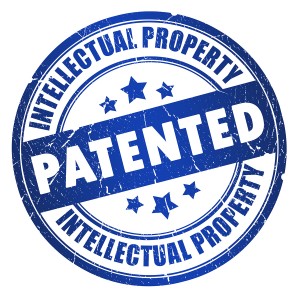Apple Inc.’s (NASDAQ: AAPL) application for a patent to protect its new “smart bezel” design, a technology which would add new input capabilities to touchscreens, was published yesterday by the U.S. Patent & Trademark Office. The bezel is the border around the edge of a touchscreen, which currently has no touch sensing capability. Apple’s fresh design would, if actually built, place four addition pressure sensors into future touchscreen devices such as the iPhone and iPad, one in each corner of the bezel. This placement would leave portions of the bezel inert, enabling users to handle their mobile device comfortably.
The smart bezel would not simply extend the touch sensitive area of the screen. Instead, it would incorporate special force sensors which could detect the starting point and movement direction of a touch. This would enable a new, complex suite of gestures for quick and detailed UI input more sophisticated than anything offered by any current Apple Inc. (AAPL) device.
 Patent application number 20140028575, which bears the name “Gesture and Touch Input Detection through Force Sensing,” was revealed to the public on Thursday by the Patent & Trademark Office. One of the inventors is listed as Wayne C. Westerman, Apple’s Senior Engineer of Multi-Touch Gestures and Algorithms, holder of more than twelve patents and recipient of Purdue University’s Outstanding Electrical and Computer Engineer (OECE) Award. The other is Nima Parivar, an HID Software Engineering Manager with eight patents to his credit.
Patent application number 20140028575, which bears the name “Gesture and Touch Input Detection through Force Sensing,” was revealed to the public on Thursday by the Patent & Trademark Office. One of the inventors is listed as Wayne C. Westerman, Apple’s Senior Engineer of Multi-Touch Gestures and Algorithms, holder of more than twelve patents and recipient of Purdue University’s Outstanding Electrical and Computer Engineer (OECE) Award. The other is Nima Parivar, an HID Software Engineering Manager with eight patents to his credit.
Apple’s (AAPL) products have featured progressively narrower bezels over the years, and it is uncertain if the smart bezel concept would reverse this trend. The simple granting of the patent does not mean that the Cupertino firm will make use of the technology, either. Sometimes preventing other companies from using a specific concept, and having a legal monopoly on the design if it ever becomes commercially viable, is as useful as actually putting concept into production.
Also unveiled on Thursday was a patent application for a method of “creating sapphire windows,” which many analysts associate with the rumor that the iPhone 6 will feature a display fitted with sapphire glass. That the “sapphire windows” are meant to be used for touchscreens is confirmed by several notations in the patent itself, including the fact that it will support an “oleophobic coating” (that is, that it will repel human skin oils) and that the example electronic device shown in the filing’s diagrams has the silhouette of a generic iPhone smartphone.
These two Apple Inc. patents applications were revealed close on the heels of the granting of approximately 30 other patents earlier in the week. With such a suite of new intellectual property at their disposal, the California-headquartered consumer electronics giant has many different paths they could pursue in expanding their product range in fresh directions over the next few years, and perhaps restore investor confidence at the same time.
For more Apple news follow PFhub on Twitter or bookmark this page.



